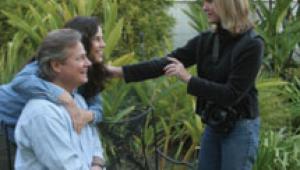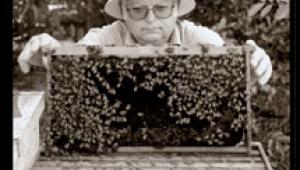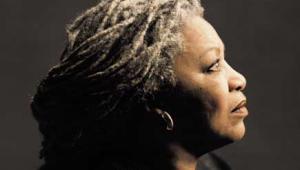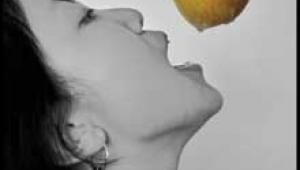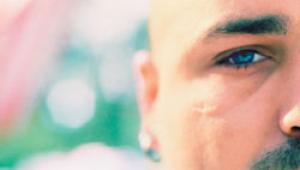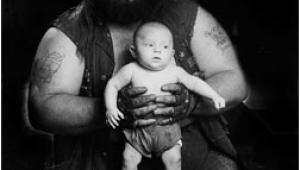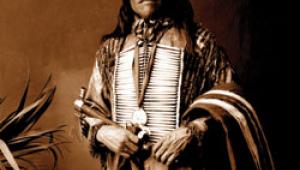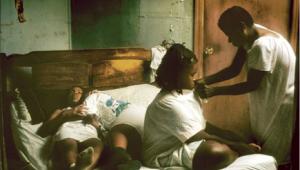Meg Smith: Capturing the Spirit of the Moment Page 2
Smith shoots only film, with no plans to go digital. She started out photographing entirely in black-and-white, but now she also works in color, depending on her clients' needs. Her black-and-white film preferences are Kodak Tri-X 400 and TMZ 3200 (for low-light situations). In color, she uses Fuji NPH 400 (and sometimes ISO 800 or 1600 in low light). "I don't push or pull film--I like to keep it simple," she points out. Generally, she says that she feels "If something is gorgeous in color, I'll shoot color. If it's more about the people, I'll shoot black-and-white." Smith says that at weddings, she often shoots color to begin with, and then more black-and-white as the evening goes on. She says she typically shoots about 40 rolls of film at each wedding--220 and 35mm, color and black-and-white.
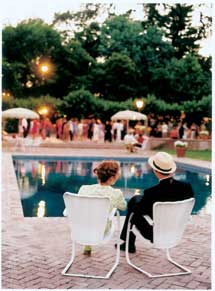 |
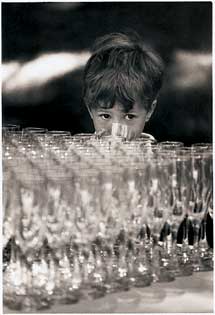 |
||
|
|
She doesn't use filters (she points out that wedding photographers sometimes
use diffusers or star filters). "The only `gimmicky' thing
I do is to use a lot of shallow depth of field," Smith says. In addition
to this effect, shooting at f/1.4 or f/2 enables her to shoot without flash.
She sometimes does time exposures and uses a tripod, especially at night.
Her camera cache includes the Nikon N90, N90s, and an F100, as well as a Mamiya
645 AF. "A lot of wedding photographers prefer one format over another,"
she comments. Whatever the format, though, Smith says she depends on quick,
autofocusing cameras to avoid missing a shot. She also emphasizes that she uses
"backups on everything."
Smith says she uses fast lenses, and her favorite is the Nikkor 85mm f/1.4.
She also uses a 28--70mm, and a 210mm ("it's nice for daylight").
She describes herself as "having a lot of gear for being such a non-technical
person."
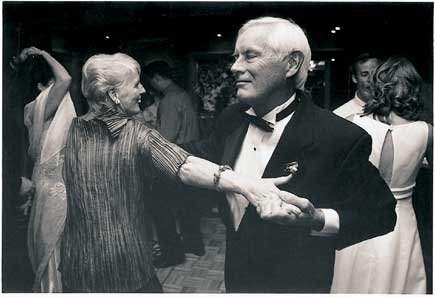 |
|
|
The Business of Wedding Photography
In retrospect, she says, she's glad she had the opportunity to start her
wedding business in the Napa Valley, as it's a sought-after destination
for those who want to get married in the romantic wine country of northern California.
Today, however, she estimates that about 40% of the weddings she shoots are
in the Napa Valley, and the rest take place on the east and west coasts, as
well as some international locations. She says she enjoys traveling to new places
and meeting new people, which keeps her job interesting. She comments, "I've
met a lot of great people--both clients and those in the industry. I feel
really lucky that way."
Like many photographers who do a lot of travel, she discusses how strict airport
security has become, especially for photographers. She says she literally "camped
out" at New York's JFK airport right after September 11, 2001, as
she was hired to photograph a wedding in California on September 15, and most
air carriers weren't flying. She dealt with an understandably nervous
bride, and even had a back-up photographer ready to go. (But happily, she made
the wedding after all.)
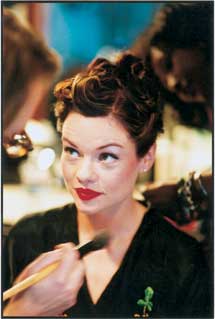 |
|
|
She says she photographs about 25 weddings a year, a number that's been
reduced from 65 weddings in the year 2000. Back then, as she puts it, "I
had no life!" At least with 25, she says, she feels that her work is much
more manageable. "I'm doing less, but much better quality."
She says that a lot of people think that wedding photographers only work on
weekends, but it certainly isn't the case. Smith points out that there's
much "post-production work," not the least of which is the couple's
wedding album.
Although most of her work comes from word of mouth, she works closely with wedding
planners, floral designers, and other wedding industry people. "It's
a constant referral service," Smith says.
Although she always works with an assistant, Smith is the primary wedding photographer.
She describes her work as having "a commercial bent, but wedding-related."
In addition to her magazine work, she offers additional services to couples,
like announcement photos, engagement portraits, or other special events before
the wedding day ("they're really relaxed at other locations, as
opposed to the day of their wedding"). Some couples have even flown her
out to interview her, or have even asked her to "document the gown fitting."
According to Smith, many people hire her after viewing her Website, www.megsmith.com,
sometimes even without meeting her in person. Other far-away clients "ask
me to send my portfolio first."
Parting Shots
Her advice to hopeful wedding photographers is, "Start shooting all the
time. It should become second nature--the camera should become an extension
of you." She also emphasizes how important it is that one must know his/her
camera. "It's translating for you." And at the wedding, she
advises, "You've got to be calm in stressful situations, and flexible.
Nothing is set in stone." She also feels strongly about photographers
finding their particular style: "Experiment with color, black-and-white,
and learn what works for you." And perhaps most importantly, she says,
"Know that it's a very special day for the couple, and you're
responsible for their memories!"
- Log in or register to post comments
